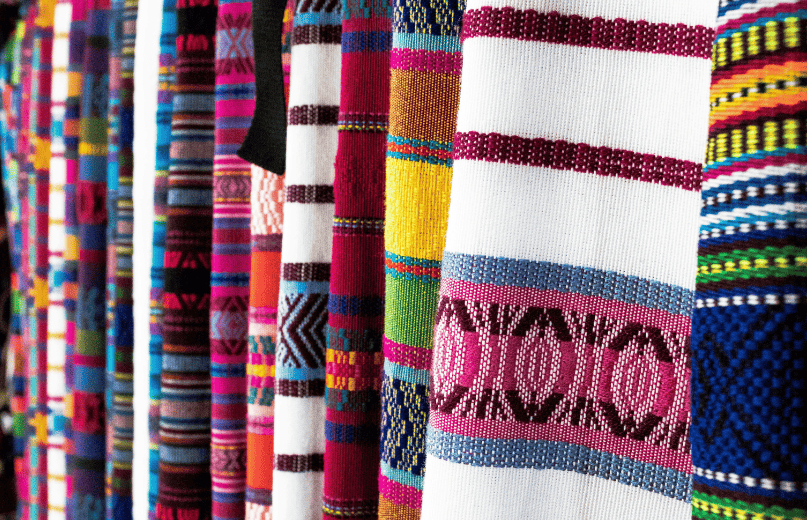
Tensile Strength Testing for Textiles
Tensile strength in textiles refers to the maximum force a fabric can withstand when stretched before it breaks. This property is central to evaluating how durable and reliable a textile is under physical stress. Tensile testing replicates the kinds of tension fabrics experience during real-world usage, such as pulling, dragging, or pressure from body movements.
The measurement is typically expressed in:
- Newton (N) or Pound-force (lbf) for absolute force
- N/50mm or lbf/inch for normalized width comparisons
Tensile performance varies widely depending on:
- Fiber composition – e.g., polyester and nylon generally exhibit higher tensile strength than cotton or rayon
- Fabric structure – woven fabrics usually have higher tensile resistance compared to knitted or nonwovens
- Yarn properties – twist, count, and staple length directly influence breaking strength
The ability of a fabric to maintain structural integrity under stress is especially vital in technical textiles, military applications, industrial uniforms, airbags, tents, and medical devices. In these use cases, failure under tension could pose functional or safety risks.

Why Tensile Strength Testing Is Essential in Fabric Quality Control
Tensile strength testing is a cornerstone in textile quality control. Whether you’re producing high-performance industrial fabrics or basic garments, understanding a material’s resistance to breaking helps ensure product consistency and reduce failure in the field.
Verifies structural durability
Fabrics that fail prematurely often suffer from inadequate tensile strength. Testing helps identify weak constructions, substandard yarns, or unsuitable blends early in development or procurement stages.
Supports regulatory compliance
Standards such as ASTM D5034 and ISO 13934 specify tensile performance thresholds that fabrics must meet for certain markets or applications. Failing to meet these benchmarks can result in product recalls, lost contracts, or safety issues.
Enhances buyer confidence and sourcing accuracy
Buyers, especially in the international sourcing context, increasingly request tensile data before approving production runs. Brands focused on quality assurance use this data to compare suppliers, negotiate pricing, and reduce risk.
Prevents downstream product failures
When garments rip, uniforms degrade, or upholstery tears prematurely, it’s usually a sign of poor tensile properties. Testing avoids these issues by ensuring materials meet performance expectations under load.
Standard Methods for Textile Tensile Testing
Tensile testing in textiles is highly standardized to ensure reliable, repeatable results. Two of the most widely used methods are the grab test and the strip test. Selection depends on fabric type, end use, and buyer requirements.
Grab Test (ASTM D5034 / ISO 13934-2)
- Measures the breaking force using a partial width of the specimen held in clamps
- Simulates real-world stress where fabric edges are not fully supported
- Common for apparel and general-purpose fabrics
Strip Test (ASTM D5035 / ISO 13934-1)
- Uses the full-width of the specimen between clamps
- Provides a more controlled measurement of tensile properties
- Suitable for research, technical fabrics, and comparison studies
Additional Methods
- Raveled Strip Test: removes edge yarns for more precise alignment
- Cut Strip Method: uses standard-width strips with no yarn removal
Common Equipment
- Universal Testing Machines (UTMs) fitted with textile grips
- Pneumatic or mechanical clamps to prevent slippage or fabric damage
- Load cells selected based on expected breaking range
Test parameters typically include:
- Gauge length (commonly 75mm or 100mm)
- Crosshead speed (usually 300mm/min)
- Sample count (minimum 5 per direction: warp and weft)
All testing must be done after proper conditioning (temperature and humidity control) as per ASTM D1776 or ISO 139 to standardize moisture content in samples.
Key Factors That Affect Testing Accuracy
Even when following standard procedures, various variables can skew tensile test results. Understanding and controlling these factors is key to producing valid and reproducible data.
Sample Direction
- Warp direction (machine direction) typically has higher tensile strength than weft direction due to yarn density and tension during weaving.
- Both directions must be tested and reported separately.
Sample Preparation
- Cutting inaccuracies, fraying edges, and inconsistent dimensions compromise results
- Use sharp cutters, standardized templates, and fabric guides
Environmental Conditions
- Temperature and relative humidity significantly influence fiber elasticity and moisture regain
- Always precondition and test in controlled environments (typically 21°C, 65% RH)
Grip Type and Pressure
- Incorrect grip pressure can cause fabric slippage or premature tearing
- Grips must match fabric type- serrated, rubber-faced, or pneumatic as needed
Operator Influence
- Variations in loading, positioning, or timing affect test consistency
- Well-trained technicians reduce human error and improve data validity
Accurate testing requires discipline in both setup and execution. Any deviation from test norms introduces uncertainty into strength data and potentially into final product quality decisions.
Reliable fabric performance starts with accurate tensile strength testing. Whether you’re sourcing, manufacturing, or certifying textiles, standardized testing methods such as ASTM D5034 and ISO 13934 provide measurable proof of material durability. By applying consistent procedures and interpreting the results correctly, teams can prevent costly failures, uphold compliance, and make better production decisions.
To ensure your textile products meet international tensile strength standards, contact ECQA for certified fabric testing, expert analysis, and compliance support.

 Request Free Sample Report
Request Free Sample Report